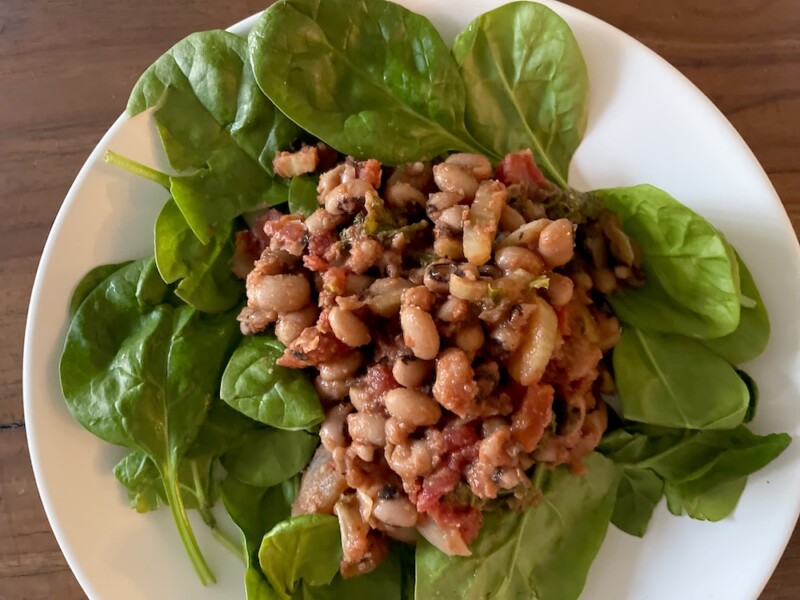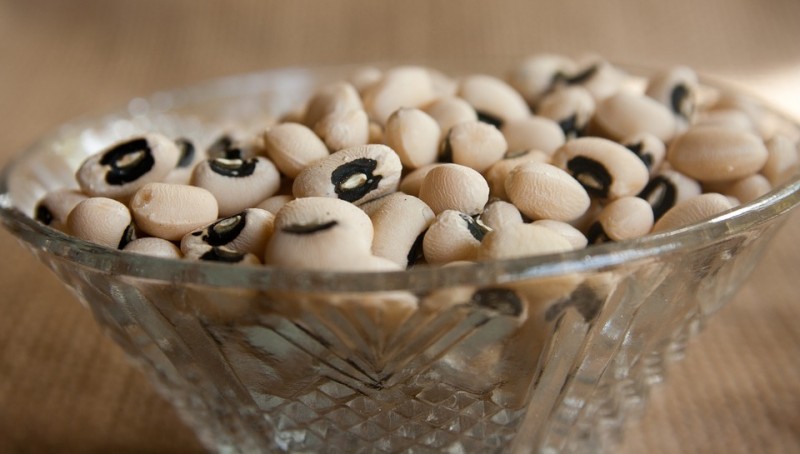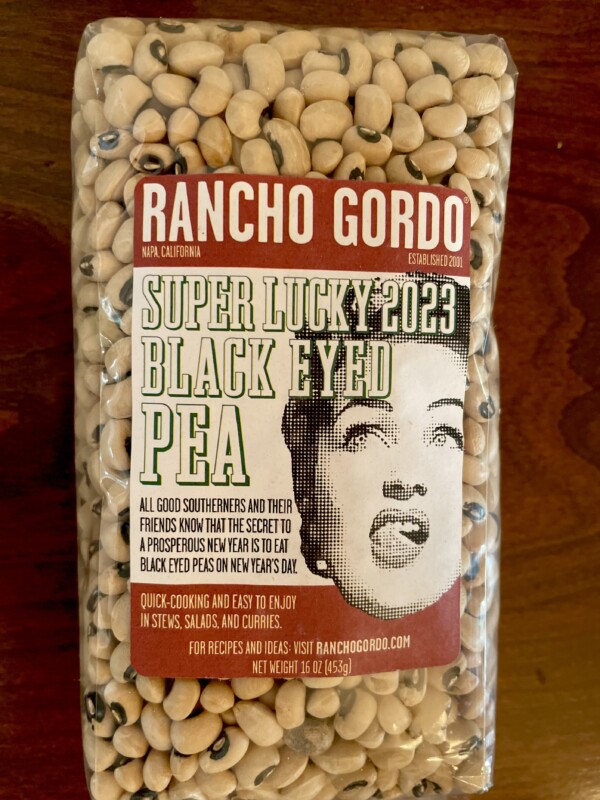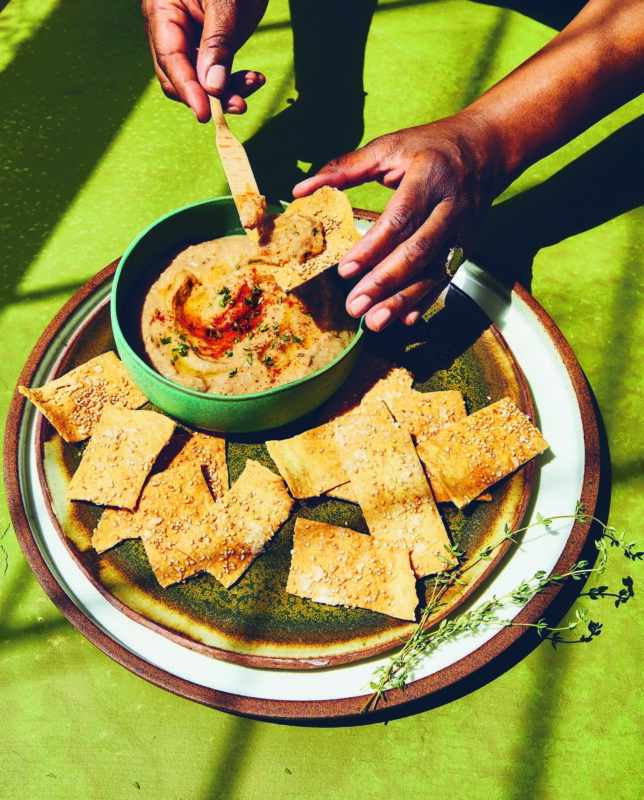Hopping john, that simple but magical melange of rice and black-eyed peas is my favorite way to start the new year. It’s delicious, comforting, and promises good luck. So why wait till New Year’s Day? There are a million more ways to enjoy these black-eyed beauties and a million more reasons to do so.
For starters, in Judaism, black eyed peas symbolize abundance and fertility. They’re a star in Sephardic cuisine. Everyone loves a latke, but I love black-eyed peas at Hanukkah, in a fragrant fennel stew.

How to Make
- In a large soup pot, heat olive oil over medium-high heat. Add chopped onion, garlic and pepper flakes. Stir to coat and reduce heat to medium.
- Add sliced fennel and sauté vegetables, stirring occasionally, until soft, golden and fragrant, about 15 minutes.
- Stir in diced tomatoes, the black-eyed peas and wine or anisette. Add chopped greens by the handful and mix gently. Cover and reduce heat to low, so the greens become tender. Let ingredients simmer for another 15 minutes.
- Stir in the cider or sherry vinegar and season to taste with sea salt and freshly ground pepper.
- You can serve it out of the pot, where it will moist but not watery. If you’d like a drier dish, pour beans and fennel into a lightly oiled casserole and bake uncovered at 350 for 20 to 30 minutes, until heated through and lightly crusty on top.

Black-eyed Pea Swaps and More
- The first December I wrote about hopping john, I created such a demand for black-eyed peas, my local market sold out of them. Don’t let your luck run out! Stock up while you can.
- Black-eyed peas are probably the most famous member of the field pea family, but they’re kin to varites with fun names like Rattlesnakes, Zippers, Big Red Rippers, Cowpeas, Crowder peas, Lady peas and Turkey Craws.
Field peas are also known Southern beans. Despite that, they’re not just a Southern thing. In fact, the South came late to the pea party. Black-eyed peas date back at least five millennia. They got their start in India or maybe Asia, and somehow reached Africa, where they were recognized for the treasure they were, and became a major crop. Americans were slower on the uptake.

One apocryphal story says everything changed with the Civil War, and Sherman’s scorched earth march on the South. Black-eyed peas, which many had dismissed, were suddenly the crop that could sustain people.
- They sustain the planet, too, being low water, high yield. They’re incredibly heat tolerant, too, a crop that can feed many as we race to address climate change.
- Black-eyed peas thrive when it’s hot, and survive the freezer, too. Cook up a big pot of these black-eyed beauties now, freeze any leftovers, then pull your ready-made meal out some miserable winter night when the idea of cooking reduces you to tears.
- At a time when food prices are high — along with everything else — black-eyed peas offer affordable sustenance. They’re low in price, high in protein and fiber.
- As we brace for holiday consumerism, black-eyed peas remind us to be grateful for what we have. How lucky is that?

Black-eyed Peas and Fennel
Ingredients
- 1 tablespoon olive oil
- 1 large onion chopped
- 3 cloves garlic minced
- 1 pinch red pepper flakes
- 1 fennel bulb sliced thin
- 1 can 15-ounces diced tomatoes
- 2 cups black-eyed peas cooked and cooled
- 1 bunch fresh kale spinach or the greens of your dreams washed well, blotted dry and sliced into bite-sized ribbons
- 1/4 cup anisette or white wine
- 1 teaspoon cider or sherry vinegar
- sea salt and fresh ground pepper to taste
Instructions
- In a large soup pot, heat olive oil over medium-high heat. Add chopped onion, garlic and pepper flakes. Stir to coat and reduce heat to medium. Add sliced fennel and saute vegetables, stirring occasionally, until soft, golden and fragrant, about 15 minutes.
- Stir in diced tomatoes, the black-eyed peas and wine or anisette. Add chopped greens by the handful and mix gently. Cover and reduce heat to low, so the greens become tender. Let ingredients simmer for another 15 minutes.
- Stir in the cider or sherry vinegar and season to taste with sea salt and freshly ground pepper.
- You can serve it out of the pot, where it will moist but not watery. If you’d like a drier dish, pour beans and fennel into a lightly oiled casserole and bake uncovered at 350 for 20 to 30 minutes, until heated through and lightly crusty on top.
Black-eyed Peas – The World Tour
- Black-eyed peas take a Sephardic spin with zataar.
- Black-eyed peas stewed with African spices are a component in my Juneteenth bowl but they’re delicious all by themselves.
- They pair up with okra, another gift from Africa in my black-eyed pea and okra stew.

- Chef Tanya Holland shares a recipe for black-eyed pea dip from her new book, Tanya Holland’s California Soul.
- Black-eyed peas take on a Caribbean vibe with coconut and curry in this recipe from The Curious Chickpea.
- My Greek Table star Diane Kochilas shares a Greek pairing of greens and black-eyed peas

Leave a Reply